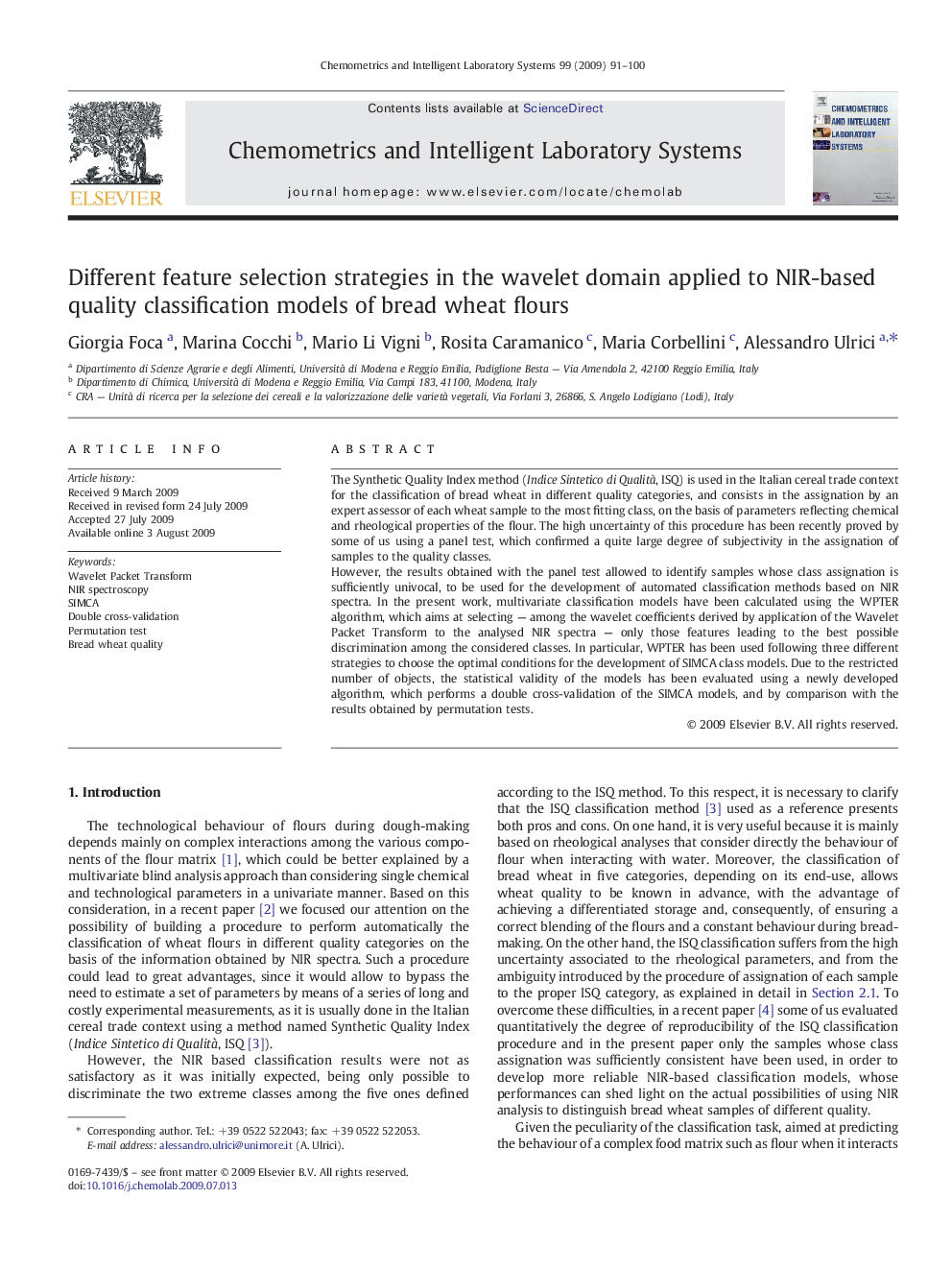| Article ID | Journal | Published Year | Pages | File Type |
|---|---|---|---|---|
| 1181083 | Chemometrics and Intelligent Laboratory Systems | 2009 | 10 Pages |
The Synthetic Quality Index method (Indice Sintetico di Qualità, ISQ) is used in the Italian cereal trade context for the classification of bread wheat in different quality categories, and consists in the assignation by an expert assessor of each wheat sample to the most fitting class, on the basis of parameters reflecting chemical and rheological properties of the flour. The high uncertainty of this procedure has been recently proved by some of us using a panel test, which confirmed a quite large degree of subjectivity in the assignation of samples to the quality classes.However, the results obtained with the panel test allowed to identify samples whose class assignation is sufficiently univocal, to be used for the development of automated classification methods based on NIR spectra. In the present work, multivariate classification models have been calculated using the WPTER algorithm, which aims at selecting — among the wavelet coefficients derived by application of the Wavelet Packet Transform to the analysed NIR spectra — only those features leading to the best possible discrimination among the considered classes. In particular, WPTER has been used following three different strategies to choose the optimal conditions for the development of SIMCA class models. Due to the restricted number of objects, the statistical validity of the models has been evaluated using a newly developed algorithm, which performs a double cross-validation of the SIMCA models, and by comparison with the results obtained by permutation tests.
